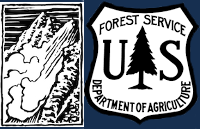24-25
Small slide in Lionhead
From FB message: "Small slide in lower elevation back by lionshead"
From FB message: "Small slide in lower elevation back by lionshead"
Forecast link: GNFAC Avalanche Forecast for Fri Feb 14, 2025GNFAC Avalanche Forecast for Sat Feb 15, 2025
Small slide in lower elevation
From FB message: "Small slide in lower elevation back by lionshead"
Small Wind Slab Taylor Fork
Persistent Slab Avalanches in Taylor Fork
We rode into the Taylor Fork, down into the bottom of Sunlight Basin, across Carrot Basin and to the Wilderness Boundary. We saw four persistent slab avalanches that likely broke last weekend or at the beginning of the week. All appeared to be snowmobiler-triggered R1-2, D1.5-2 avalanches at broke of the January layer of near-surface facets and surface hoar. Additionally, we saw one wind slab avalanche (R1, D1) in Sunlight Basin. This slide was fresh from this morning or yesterday.
We dug a crown profile for the persistent slab avalanche in Sunlight (attached). ECTN24 on the SH layer buried 50 cm (20") deep.
Buried layers of surface hoar often show up a stripe in a snowpit wall (other things such a thin melt-freeze crust can look similar but feel much differently). A snowmobiler-triggered avalanche in Sunlight Basin broke on this weak layer of feathery surface hoar. Photo: GNFAC
Relatively small persistent slab avalanche in Carrot Basin in the Taylor Fork. Photo: GNFAC
Forecast link: GNFAC Avalanche Forecast for Fri Feb 14, 2025
We rode into the Taylor Fork on Feb 13, We saw four persistent slab avalanches that likely broke last weekend or at the beginning of the week. All appeared to be snowmobiler-triggered R1-2, D1.5-2 avalanches at broke of the January layer of near-surface facets and surface hoar. Photo: GNFAC
